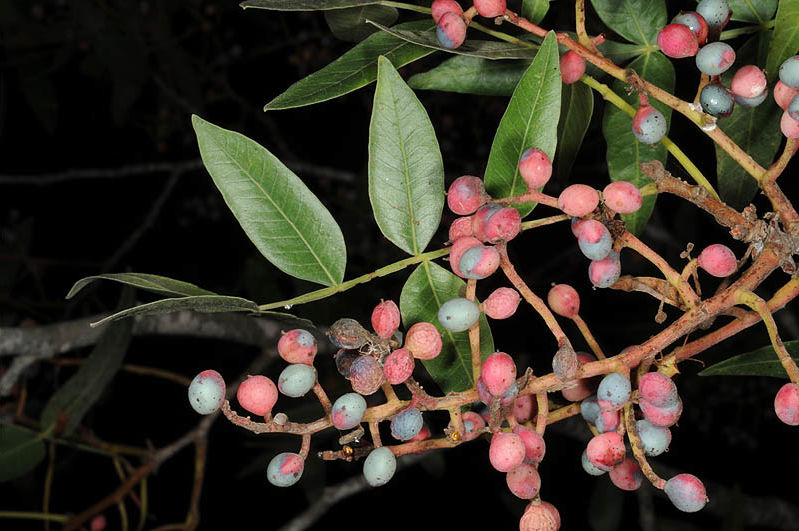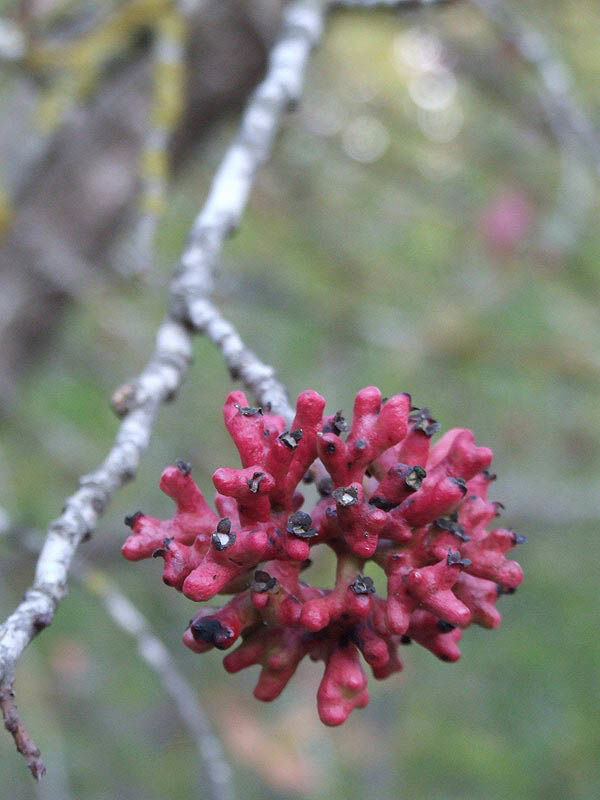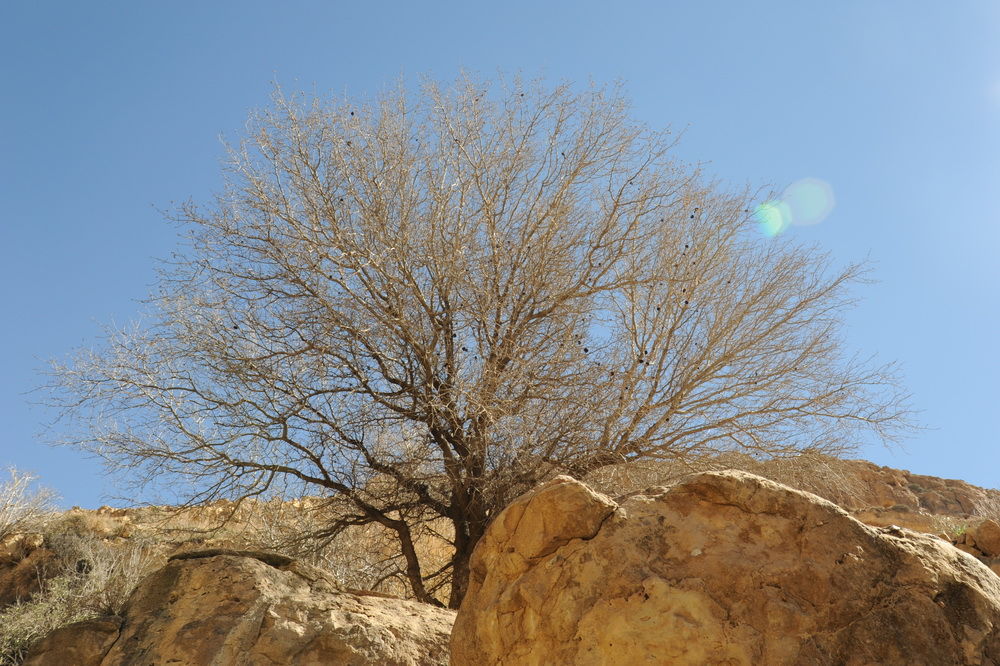Family: Anacardiaceae
Author: Desf.
Bibliography: Fl. Atlant. 2: 364 (1799)
Year: 1799
Status: accepted
Rank: species
Genus: Pistacia
Vegetable: False
Observations: Canary Is., S. & E. Medit. to W. Himalaya and Arabian Pen.
Description
The Mt. atlas mastic tree, known scientifically as Pistacia atlantica, is a remarkable species within the Anacardiaceae family. Described by botanist René Louiche Desfontaines in 1799, this tree has notable origins and habitats that contribute to its fascinating characteristics and uses.
Pistacia atlantica thrives in diverse regions spanning from the Canary Islands across the southern and eastern Mediterranean, extending towards the western Himalayas, and reaching into the Arabian Peninsula. This wide geographical distribution underscores the tree’s adaptability to various climates and terrains, a feature that has enabled it to become an integral component of many ecosystems.
The Mt. atlas mastic tree is a resilient and hardy species, typically flourishing in arid and semi-arid environments. Its ability to withstand harsh conditions makes it a valuable plant in the ecology of these regions, offering both ecological benefits and practical uses. The tree is well-regarded for its drought tolerance, growing in environments where other flora might struggle, thereby contributing to soil stabilization and reducing erosion.
One of the key characteristics of Pistacia atlantica is its production of mastic resin, which has been historically used for various purposes. The resin is valued for its aromatic qualities and has been utilized in traditional medicine, culinary applications, and even in the production of varnishes and adhesives. Additionally, the tree’s foliage provides forage for wildlife, while its wood is often used for fuel and construction in local communities.
Beyond its practical applications, the Mt. atlas mastic tree is celebrated for its aesthetic appeal. It features a robust trunk and a spreading canopy, with pinnate leaves that create a lush, green crown. During different seasons, the tree can also exhibit vibrant changes in leaf color, adding to the natural beauty of the landscapes it inhabits.
In summary, Pistacia atlantica, or the Mt. atlas mastic tree, holds significant ecological, economic, and cultural value across its native regions. Its resilience and versatility make it a vital species within the ecosystems of the Canary Islands, the Mediterranean basin, the western Himalayas, and the Arabian Peninsula, reflecting its importance in both natural and human contexts.
Common Names
Spa: almacigo
Eng: atlantic mastic tree, mt. atlas mastic tree, atlantic pistachio, cashew, mount atlas mastic, turpentine tree, wild pistachio
Deu: atlantische pistazie
Ara: betum, igg (amzigh), lebtum, بطم أطلسي
Fra: pistachier de l’atlas, térébinthe
En: Mt. Atlas mastic tree, Atlantic pistacio, Atlantic mastic tree, Atlantic Pistachio, Cashew, Mount Atlas Mastic, Turpentine tree, Wild pistachio
Ar: Betoum, بطم أطلسي, Betum, Igg (Amzigh), Lebtum
Hy: Պիստակենի բթատերև
Az: Kütyarpaq püstə
Zh: 阿特拉斯黃連木
Fi: Atlantinpistaasi
Fr: Pistachier de l’atlas, Térébinthe
Ka: Საკმლის ხე
De: Atlantische Pistazie
He: אלה אטלנטית
Fa: بنه
Pl: Pistacja atlantycka
Ru: Фисташка туполистная
Es: Almacigo
Uk: Фісташка туполиста
: Mt. atlas mastic tree
Synonyms
- Pistacia choulettei (Gand.)
- Pistacia mutica var. cypricola ((H.Lindb.) H.Lindb.)
- Pistacia atlantica f. oxycarpa (Zohary)
- Pistacia atlantica subsp. cabulica ((Stocks) Rech.f.)
- Pistacia atlantica subsp. mutica ((Fisch. & C.A.Mey.) Rech.f.)
- Lentiscus mutica ((Fisch. & C.A.Mey.) Kuntze)
- Lentiscus atlantica (Kuntze)
- Pistacia cabulica (Stocks)
- Terebinthus atlanticus ((Desf.) Dum.Cours.)
- Pistacia atlantica subsp. cypricola (H.Lindb.)
- Pistacia mutica (Fisch. & C.A.Mey.)
- Pistacia mutica f. multijuga (Engl.)
- Pistacia mutica subsp. cabulica ((Stocks) Engl.)
- Pistacia atlantica var. latifolia (DC.)
- Pistacia chia (Desf.)
Distribution
- Afghanistan (native)
- Algeria (native)
- Canary Is. (native)
- Cyprus (native)
- East Aegean Is. (native)
- Greece (native)
- Iran (native)
- Iraq (native)
- Krym (native)
- Lebanon-Syria (native)
- Libya (native)
- Morocco (native)
- North Caucasus (native)
- Pakistan (native)
- Palestine (native)
- Saudi Arabia (native)
- Sinai (native)
- Transcaucasus (native)
- Tunisia (native)
- Turkey (native)
- Turkey-in-Europe (native)
- West Himalaya (native)
- California (introduced)
- Tadzhikistan (introduced)
- Utah (introduced)
Additional Images
Leaf
Taken Sep 29, 2022 by Cristian Dorta (cc-by-sa)
Taken Aug 8, 2020 by Amathusian (cc-by-sa)
Taken Nov 26, 2021 by vent_en_panne (cc-by-sa)
Taken Aug 25, 2022 by emily rigoulay (cc-by-sa)
Taken May 21, 2020 by Aziz (cc-by-sa)
Bark
Taken Sep 4, 2021 by Maarten Vanhove (cc-by-sa)
Taken Feb 16, 2019 by Marzanna Bug (cc-by-sa)
Taken Oct 22, 2013 by Tela Botanica − Pierre Bonnet (cc-by-sa)
Taken May 14, 2021 by Karim BOUDANI (cc-by-sa)
Taken Aug 8, 2020 by Amathusian (cc-by-sa)
Flower
Taken Oct 5, 2022 by Victor Fuentes (cc-by-sa)
Taken Oct 14, 2018 by Melinda Miller (cc-by-sa)
Taken Apr 22, 2022 by Emir Eryüksel (cc-by-sa)
Taken Sep 4, 2021 by Maarten Vanhove (cc-by-sa)
Taken Apr 4, 2018 by Tela Botanica − Patrick Leboulenger (cc-by-sa)
Fruit
Taken Oct 16, 2019 by Elham Karm Al-Ardhah (cc-by-sa)
Taken Aug 8, 2020 by Amathusian (cc-by-sa)
Taken Jan 1, 1900 by EOL − Ori Fragman-Sapir (cc-by-nc-sa)
Taken Jan 1, 1900 by EOL − Ori Fragman-Sapir (cc-by-nc-sa)
Taken Aug 25, 2022 by emily rigoulay (cc-by-sa)
Habit
Taken Feb 4, 2009 by EOL − Pavel Buršík (cc-by-nc)
Taken Oct 22, 2013 by Tela Botanica − Pierre Bonnet (cc-by-sa)
Taken Oct 22, 2013 by Tela Botanica − Pierre Bonnet (cc-by-sa)
Taken Mar 16, 2016 by EOL − elorlevi (cc-by-nc)
Taken Feb 4, 2009 by EOL − Pavel Buršík (cc-by-nc)
Other
Taken Mar 15, 2015 by Photoflora – Benoit BOCK (©)
Taken Feb 15, 2009 by Photoflora – Benoit BOCK (©)
Taken Feb 15, 2009 by Photoflora – Benoit BOCK (©)
Taken Oct 15, 2000 by Photoflora – Jean-Luc TASSET (©)
Taken Mar 15, 2015 by Photoflora – Benoit BOCK (©)

© copyright of the Board of Trustees of the Royal Botanic Gardens, Kew.

© copyright of the Board of Trustees of the Royal Botanic Gardens, Kew.

© copyright of the Board of Trustees of the Royal Botanic Gardens, Kew.
Sources
- WFO (No URL)
- IPNI (No URL)
- GBIF (https://www.gbif.org/species/3190581)
- POWO (http://powo.science.kew.org/taxon/urn:lsid:ipni.org:names:70236-1)
- PlantNet (https://identify.plantnet.org/species/the-plant-list/Pistacia atlantica Desf.)
Specifications
Growth habit>: Tree






























